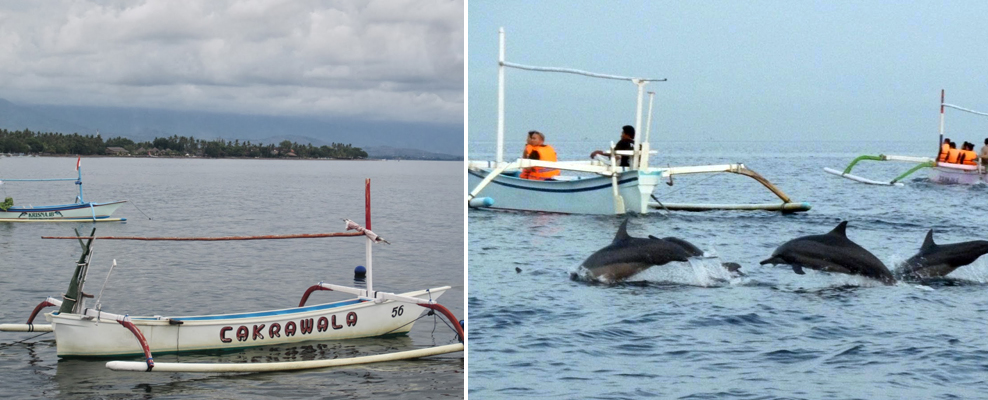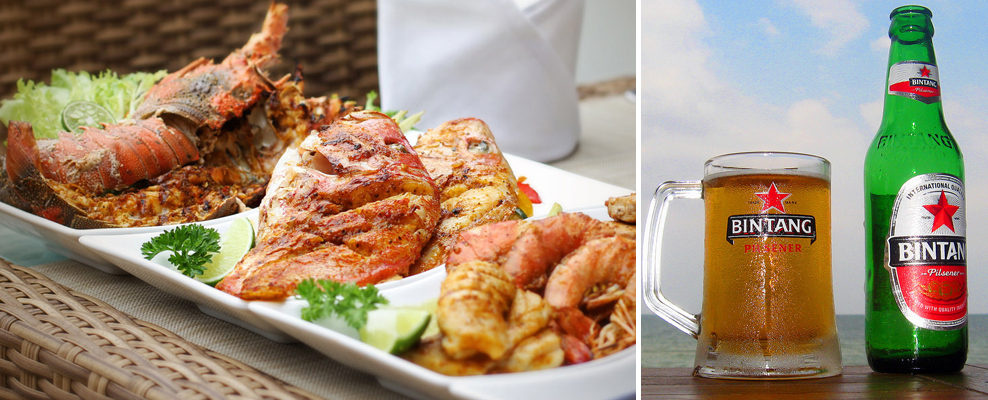Do I have a Literary Licence? I have no ‘official’ intimation, yet I am going to take a few liberties. I know that ‘Bali Hai’, the song from Rodger and Hammerstein’s 1949 musical, South Pacific, is not about the Indonesian island paradise of Bali. But it is about a mystical island. I think that quite a bit of this song applies to ‘my’ Bali too, where I currently am. The song goes:
Most people live on a lonely island
Lost in the middle of a foggy sea
Most people long for another island
One where they know they will like to be
Bali….will whisper
In the wind of the sea
“Here I am, your special island
Come to me, Come to me.”
………………………………………………..
If you try, you will find me
Where the sky meets the sea
“Here I am, your special island
Come to me, come to me.”

My time spent in Bali so far has been quite interesting. Kuta was rather touristy. So much so, that to reach the beach, I had to walk through a huge mall. But the initial picturesque landing approach over the sea to the Nugurah Rai airport, my nice hotel with its swimming pool, gardens, fountains and friendly staff, the good food and an energetic roadside fire-dance have been some pleasing factors.

Ubud has been much more interesting. Sights like the Sacred Monkey Forest and the experiences like finding a Gucci store and a posh restaurant having a rice field between them, made Ubud rather special. There were also the scores of Sculptor’s studio-cum-salesrooms, the comfortable existing together of traditional Dance-drama with funky jazz, and road trips to the places like the Temple-in-the-sea and other important temples, a volcano, the fruit belt and verdant rural landscapes.

I had a spacious room with richly carved huge wooden doors, a veranda with a view and was very well looked after by young Wayan – he with a ring in his left ear, an eveready smile, and the ownership of a champion fighting cock.
I had never heard the name “Wayan,” so I asked him about the meaning of his name. I was told that in Bali, they had a simple, traditional method of naming babies. The first born was named Wayan, the second- Made (‘Ma-day’), the third- Nyoman, and the fourth- Ketut. There are variations to these names also, but the names are the same for both the boys and the girls. The gender differentiation was made by the prefix of ‘I’ for the males and ‘Ni’ for the females. I did not dare to ask about names for the fifth or subsequent children!

Ubud was fine but I wanted to a seaside with few or no tourists and an atmosphere conducive to total relaxation. While trying to find such a place, I came across the name “Lovina.” It hardly sounded like a Balinese/Indonesian name for a place. Some research revealed an interesting story.
Anak Agung Pandji Tisna was the 11th descendent of the Padji Sakti dynasty of Bluleng, Singaraja in north Bali. He succeeded his father in 1944. Singaraja – from Sanskrit, ‘Lion King’ − was an important port and had been made the capital of Bali by the Dutch and remained so till replaced by Denpasar in the south, in 1953.
Tisna was not very interested in being a king and was more involved in being a writer, a man–of-arts and in working for the social welfare of his people. In the early 1950s, he was living in Bombay – now Mumbai – writing a book, “Ni Ketut Widhi.” He was staying in a hotel called ‘Lafeina’. After returning to Bali, he built a small 3-room cottage with a restaurant on the land he owned in the Kaliasem village. He named this property ‘Lovina’, having been inspired by the Lafeina Hotel of Bombay.

By establishing this small resort, Tisna pioneered the advent of tourism in Bali. Today, the small cottage has grown into the star-category Lovina Beach Hotel.
There are other versions of the name “Lovina” too. One says that it is the joining of ‘Love’ and ‘Ina’, which means ‘Mother’ in the local language. So Lovina is ‘Love your Mother/Motherland’. Others say that it is ‘Love’ plus ‘Ina’ as an abbreviation of ‘Indonesia’ – so Lovina means ‘Love Indonesia’. Yet another version says that the root of the name is in two Staten trees planted by Tisna, which grew up ‘embracing’ each other. So ‘Lovina’ is from Latin ‘love’ or ‘love each other’. I was so intrigued by these stories that I decided to visit Lovina.
I asked Wayan for his advice and he was very excited by my wish to visit Lovina. He offered to help me hire a car and said that he would personally drive me to Lovina, but he had one condition. His condition was that I had to visit his home before proceeding to Lovina. His village was ‘almost’ near Lovina, the detour would only be about 20 kms. I readily agreed.
We set out early next morning. Wayan had hired a rather battered looking red Toyota Camry. It may not have been beautiful, but it definitely was powerful car, and negotiated the pot-holed narrow hilly roads with consummate ease.

Getting to Lovina proved to be as exciting an experience as the later stay at Lovina. We passed – often stopping to admire – beautiful lakes, impressive temples, almost non-stop pleasing greenery, quaint villages, misty mountain-scapes with winding roads, rice fields ‘stuck’ to hillsides, and much more that was exotically soul-satisfying.
Wayan’s village was just a gathering of some 100 odd huts and houses, temples and rice fields. His parents – in their 60s? – welcomed me to their thatch-roofed bamboo hut and offered me some tea-and-biscuits. Wayan’s father was a farmer, but he was also an artist. The bamboo walls were his canvases for some very interesting paintings. While we were trying to chat, assorted chicken, dogs and a black pig, often decided to join in, but were shooed away. With great pride, I was shown the family’s champion fighting cock. It had won seven fights so far. When I asked, “But is cock fighting not illegal,” I got road grins as an answer.
Before I could leave Wayan’ village, I had to meet the extended family and – followed by a posse of children of all ages – wear a sarong to visit the family shrine.
Lovina at last! I made a beeline for the beach and was in shock-and-awe on beholding the seascape. Wayan had to pull me away, reminding me that I had to find a hotel.

After looking at a few, it was decided that I should stay at the Angsoka Hotel. It was about a three minute walk from the beach, had a sprawling spread of cottages, rooms, a swimming pool, flowers, fountains, and an open-sided restaurant. I got a cottage overlooking the garden with a veranda all my own.
Wayan bid me goodbye asking me to make sure that I stayed in his villa if I ever went to Ubud again. I was in the process of settling down when a breathless man knocked at my door to inform me that there was a phone call for me at the Reception. I was very puzzled. How could anyone know that I was at the Angsoka in Lovina when I myself did not know till about one hour back?
I was still more surprised to hear the voice of my son, Rahul. He was calling from Delhi and had done extensive detective work, calling each hotel he found listed in Lovina, till he had traced me to the Angsoka. He was highly agitated because he had found a warning about an expected earthquake in Bali. He wanted me to leave immediately and stay high up on the nearest mountain till the earthquake had passed. I reassured him that it all appeared quite normal around me and promised to call him regularly. No, I did not go to the nearest mountain-top. But, yes, there was an earthquake. Its epicentre was about 500 km away and there was no effect at all in Lovina.
The beaches of Lovina are unique due to the black sand deposited in ancient times due to volcanic eruptions. The center of all the beaches which come under the umbrella ‘Lovina’ is the dolphin statue atop a pillar.

A major star of Lovina are the dolphins. I have done dolphin-watching in many places, but never had such rewarding experiences with the dolphins as in Lovina. I was told that the dolphins appear early in the morning, with the first rays of the sun. My ‘Jukung’ (traditional fishing boat) was part of a flotilla of such boats – were there a hundred boats? – all headed in the same general direction, a little before sunrise. Then the boats spread out in a massive circle. The sun rose, but no dolphins. Another twenty minutes passed and still no dolphins. Then, suddenly, I spied one dorsal fin appearing and disappearing immediately. Then another. Yet another. This continued at intervals with boats rushing towards each fin-sighting. As the sun rose higher and warmed the waters, a school of dolphins appeared to the left of my boat. Then another on the right. More in front and rear. Soon the sea was full of countless schools of dolphins. My boatmen was managing to steer my boat as close to the dolphins as possible. The fish appeared to be fearless and were swimming, cavorting and jumping out of the water to create an unforgettable spectacle. After about an hour, the dolphins decided that it was enough for the day, and retired out of sight.
Ah, the sun. It was a very tough task to decide at Lovina as to which was more spectacular, the sunrise or the sunset. Both were an awe-inspiring experience. Good weather meant a daily fantastic sunrise/sunset free show.

I had planned on staying in Lovina for three days, but I stayed on and on – for a much longer time. The comforts of the Angsoka, long walks on the beach, ‘dancing’ with the dolphins, the daily sunrise/sunset drama, great freshly-caught seafood, the Balinese Bintang beer, Jazz/Rock in the evenings in a nearby nightspot – all these and more made my Lovina stay an ‘Affair to Remember’!
